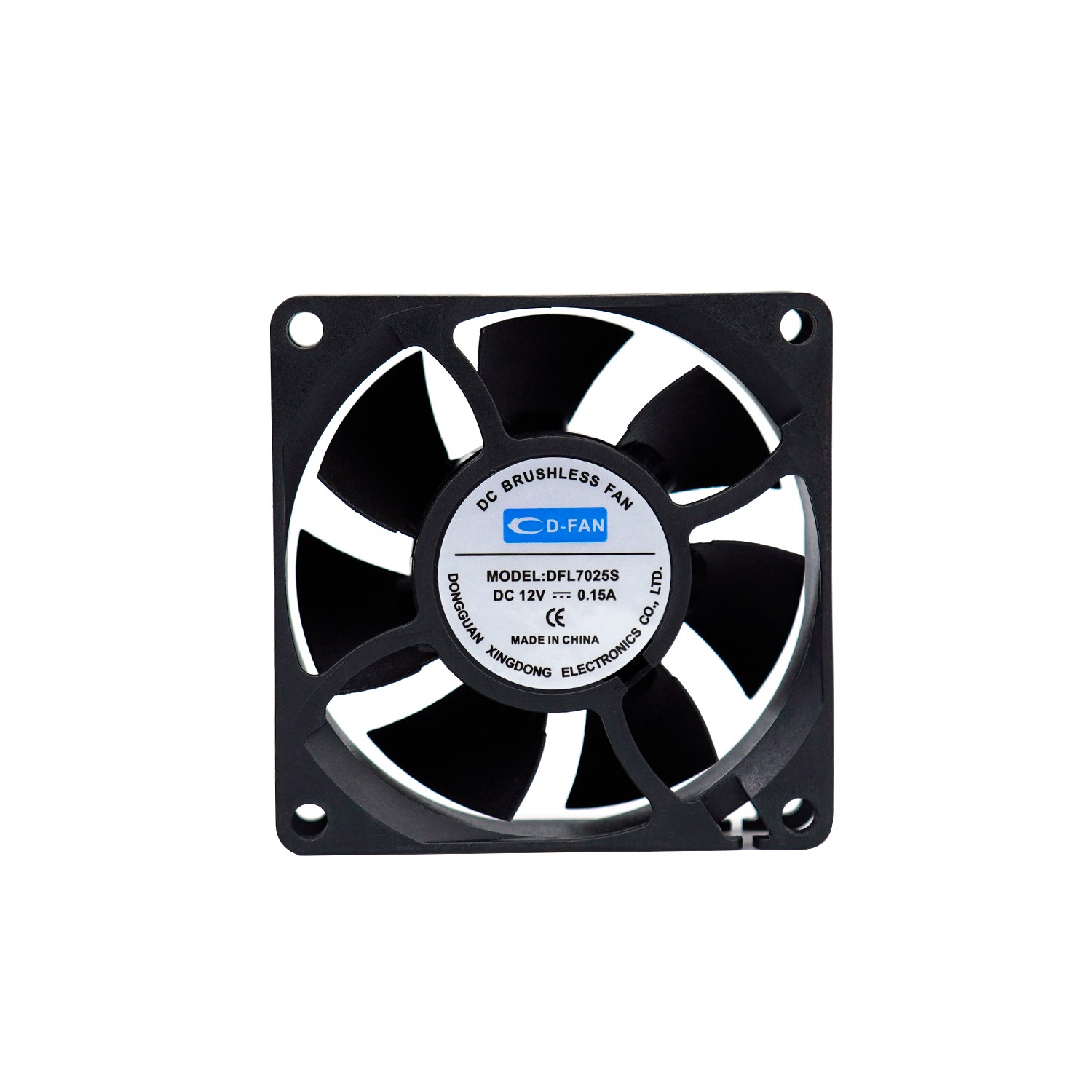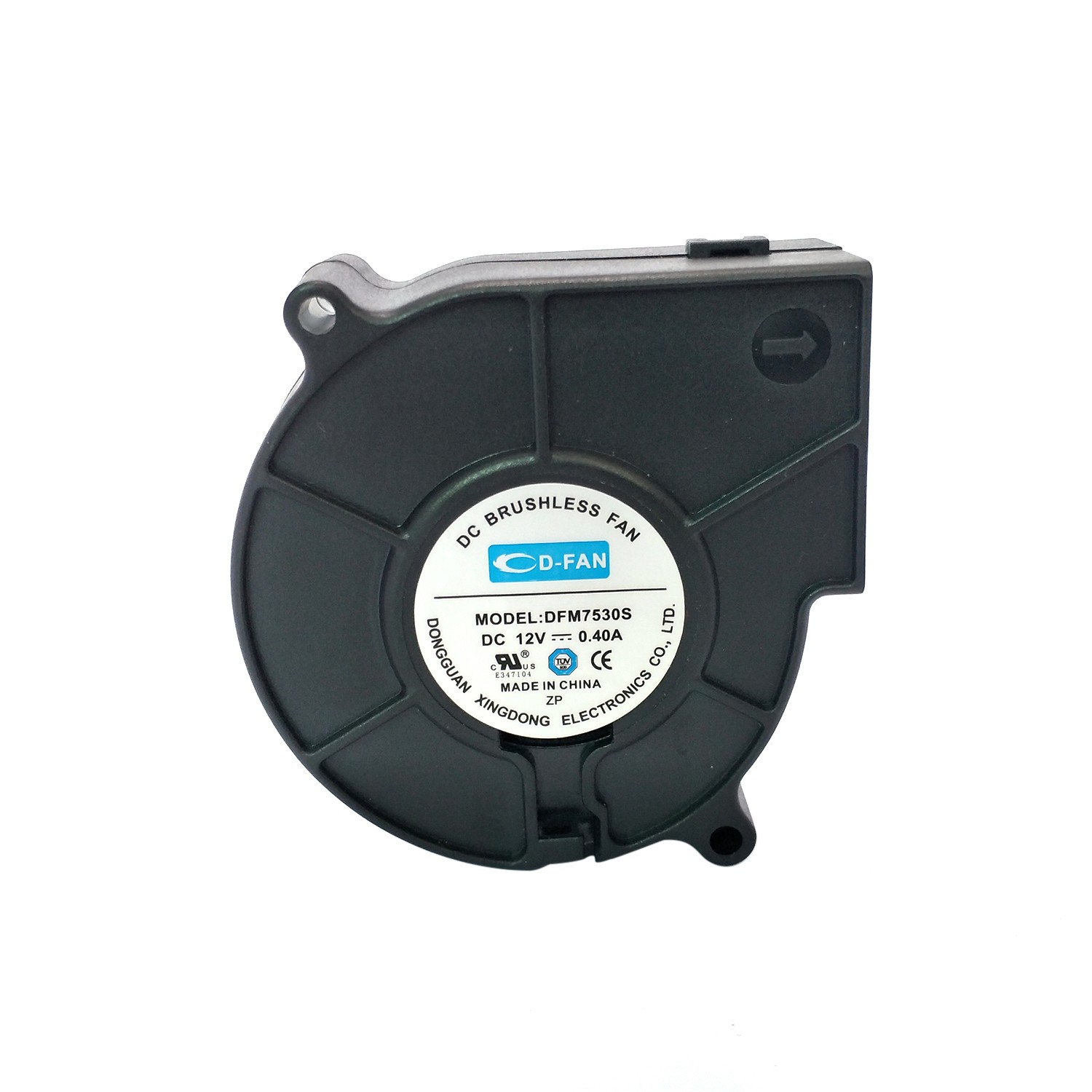Introduction
DC cooling centrifugal fans rely on input mechanical energy – centrifugal fans are machines that increase gas pressure through mechanical energy and then transport gas out. They are one of the four major components in dust removal and ventilation systems. A machine that increases gas pressure and exhausts gas, which is a driven fluid machine. DC cooling centrifugal fans are widely used for ventilation, dust removal, and cooling in factories, mines, tunnels, cooling towers, vehicles, ships, and buildings; Ventilation and induced draft of boilers and industrial kilns; Cooling and ventilation in air conditioning equipment and household electrical equipment; Drying and selection of grains; Wind source of wind tunnel and inflation and propulsion of Hovercraft.

Performance
DC cooling centrifugal fans are based on the principle of converting kinetic energy into potential energy (efficient, energy-saving, and durable). They use high-speed rotating impellers to accelerate the gas, then slow down and change the flow direction, converting kinetic energy into potential energy (pressure). In a single stage centrifugal fan, gas enters the impeller from the axial direction, changes to the radial direction as it passes through the impeller, and then enters the diffuser. In a diffuser, the gas changes the direction of flow and the cross-sectional area of the pipeline increases, causing the airflow to slow down. This deceleration effect converts kinetic energy into pressure energy. The increase in pressure mainly occurs in the impeller, followed by the expansion process. In a multi-stage centrifugal fan, a reflux device is used to cause the airflow to enter the next impeller, generating higher pressure.
Operating within an ambient temperature range of -10℃ to +70℃, the DC Cooling Centrifugal Fan excels at maintaining optimal temperatures. By effectively removing heat, it prevents overheating and extends the life of temperature-sensitive components. With the lowest possible noise levels, this fan operates quietly, ensuring a peaceful environment for power supply applications.

Repair and maintenance of fans
Proper maintenance and upkeep is an important guarantee for the safe and reliable operation of the fan and the improvement of its service life. Therefore, when using fans, sufficient attention must be paid.
- Repair and maintenance of impeller
At the initial stage of impeller operation and during all regular inspections, whenever there is an opportunity, it is necessary to inspect the impeller for defects such as cracks, wear, and dust accumulation.
Whenever possible, it is necessary to keep the impeller clean and regularly use a wire brush to remove any accumulated dust and rust on it. As the running time increases, these dust cannot evenly adhere to the impeller, causing damage to the impeller balance and even causing rotor vibration.
Once the impeller is repaired, it needs to be dynamically balanced again. If conditions permit, a portable trial balance instrument can be used for on-site balancing. Before performing dynamic balancing, all fastening bolts must be checked for tightness. Because the impeller has been operating in an unbalanced state for a period of time, these bolts may have become loose. - Maintenance of the casing and intake chamber
Except for regularly checking the interior of the casing and intake chamber for severe wear and removing severe dust accumulation, these areas may not require other special repairs.
Regularly check whether all fastening bolts are tightened. For fans with compression bolt parts, press the butterfly spring on the foot to the installation height specified in the drawing. - Maintenance of the bearing department
Regularly check the lubrication oil supply of the bearings. If there is oil leakage in the box, tighten the bolts of the end cover a bit. If this is not enough, you may have to replace it with a new sealing filler. - Maintenance and repair of other supporting equipment
The maintenance and upkeep of various supporting equipment, including motors, electric actuators, instruments, and meters, can be found in their respective user manuals. These user manuals are provided by various supporting manufacturers, and our factory will randomly pack these manuals and provide them to users. - Maintenance and upkeep when the fan is out of use
When the fan is stopped, when the ambient temperature is below 5 ℃, the residual water of the equipment and pipelines should be drained to avoid freezing damage to the equipment and pipelines. - Maintenance work for long-term shutdown and storage of fans when not in use
- Coat the surfaces of bearings and other major components with rust resistant oil to prevent rusting.
- Every half month or so, the fan rotor should be manually moved and rotated by half a turn (i.e. 180 °). Before moving, marks should be made on the shaft end to ensure that the original top point is at the bottom after moving the rotor.
Related Products







